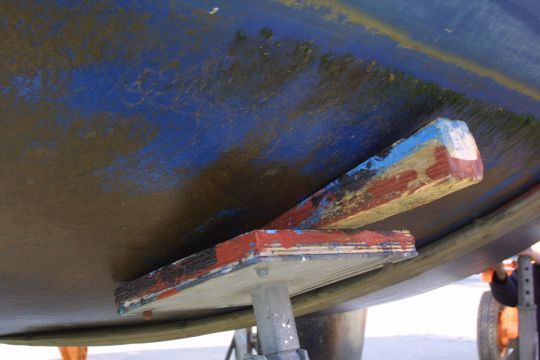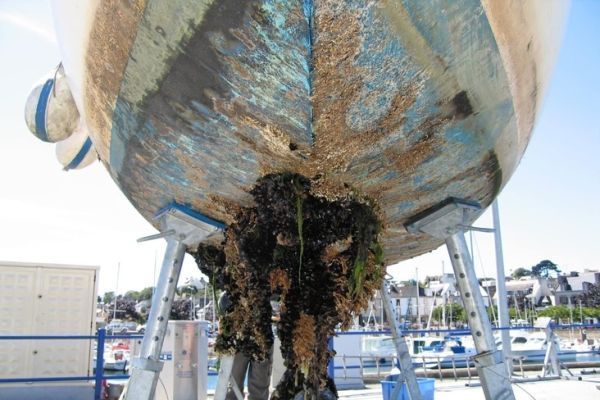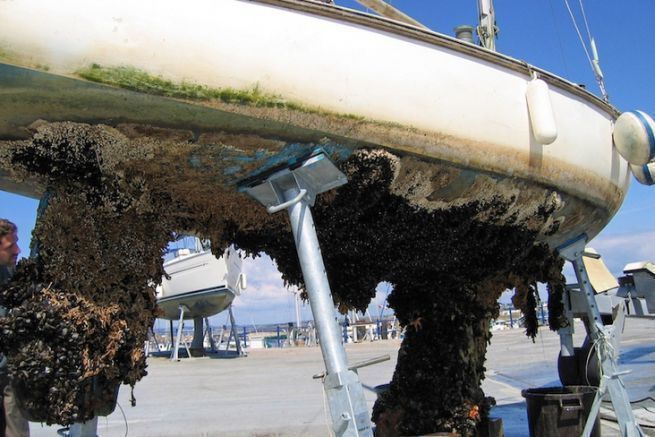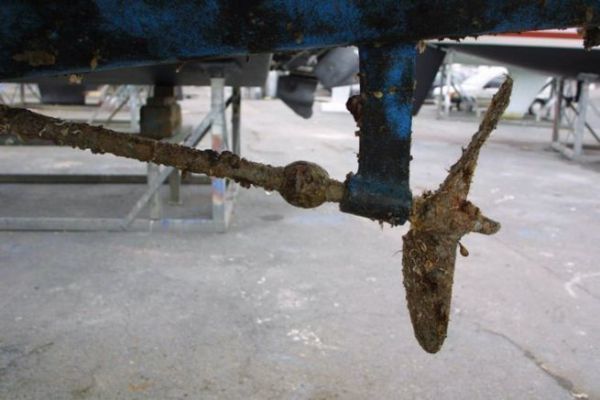An erodible antifouling is designed to wear down gradually as the boat is used. As it erodes, it takes with it the bacteria that colonize a hull as soon as it is immersed in water. Without bacteria, there is no life, and without life, there is no shell that sticks to the underside of the boat.
But inevitably, an erodible paint will eventually disappear, so it must be replaced. To know if there is still some on the hull, here is a little trick that will save you a lot of trouble.
Blue on red

On a clean hull, start with the traditional primer that bonds the antifouling to the gelcoat, for polyester boats. Once this primer is applied, a first coat of hard matrix antifouling is applied. Be careful to choose a different color than the final erodible antifouling. For example red if the final antifouling is blue.
Then you apply your two or three coats of erodible antifouling on top. No fear, my two paints are compatible.
A visual indicator

So, after the sailing, you will see the red layer under the blue layers. This is a sign that it is time to redo the antifouling. In the meantime, this part of the red hull will still be protected by the hard matrix antifouling. This gives time to find a window to get the boat out of the water.

 /
/ 




















